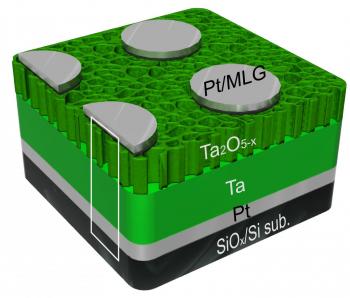Scientists at Rice University have created a solid-state memory technology based on graphene and tantalum oxide (a common insulator in electronics) that allows for high-density storage with a minimum occurrence of computer errors.

Applying voltage to a graphene, tantalum, nanoporous tantalum oxide and platinum structure creates addressable bits where the layers meet. Control voltages that shift oxygen ions and vacancies switch the bits between ones and zeroes. This design may allow for crossbar array memories that store up to 162 gigabits, higher than other oxide-based memory systems under investigation by scientists.
The new devices require only two electrodes per circuit, making them simpler than present-day flash memories that use three. The new design is also said to require 100 times less energy than present devices. It is a new way to make nonvolatile computer memories - memories that hold their data even when the power is off, unlike volatile random-access computer memories that lose their contents when the machine is shut down.
The scientists state that since the new graphene-tantalum design is based on two-terminal systems, it's all set for 3D memory stacks and doesn't need diodes or selectors, making it one of the easiest ultradense memories to construct. It should be a real competitor for the growing memory demands in high-definition video storage and server arrays.